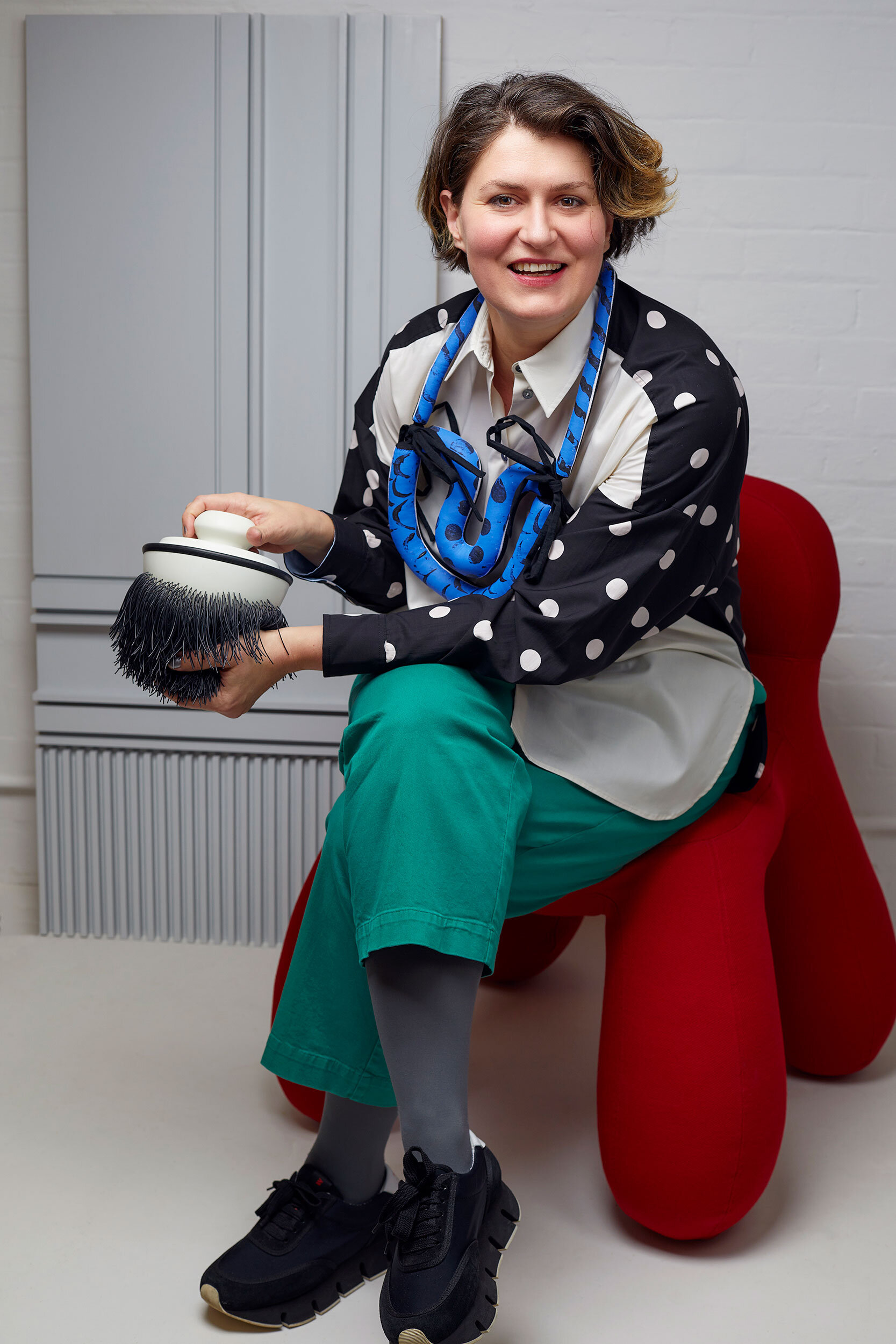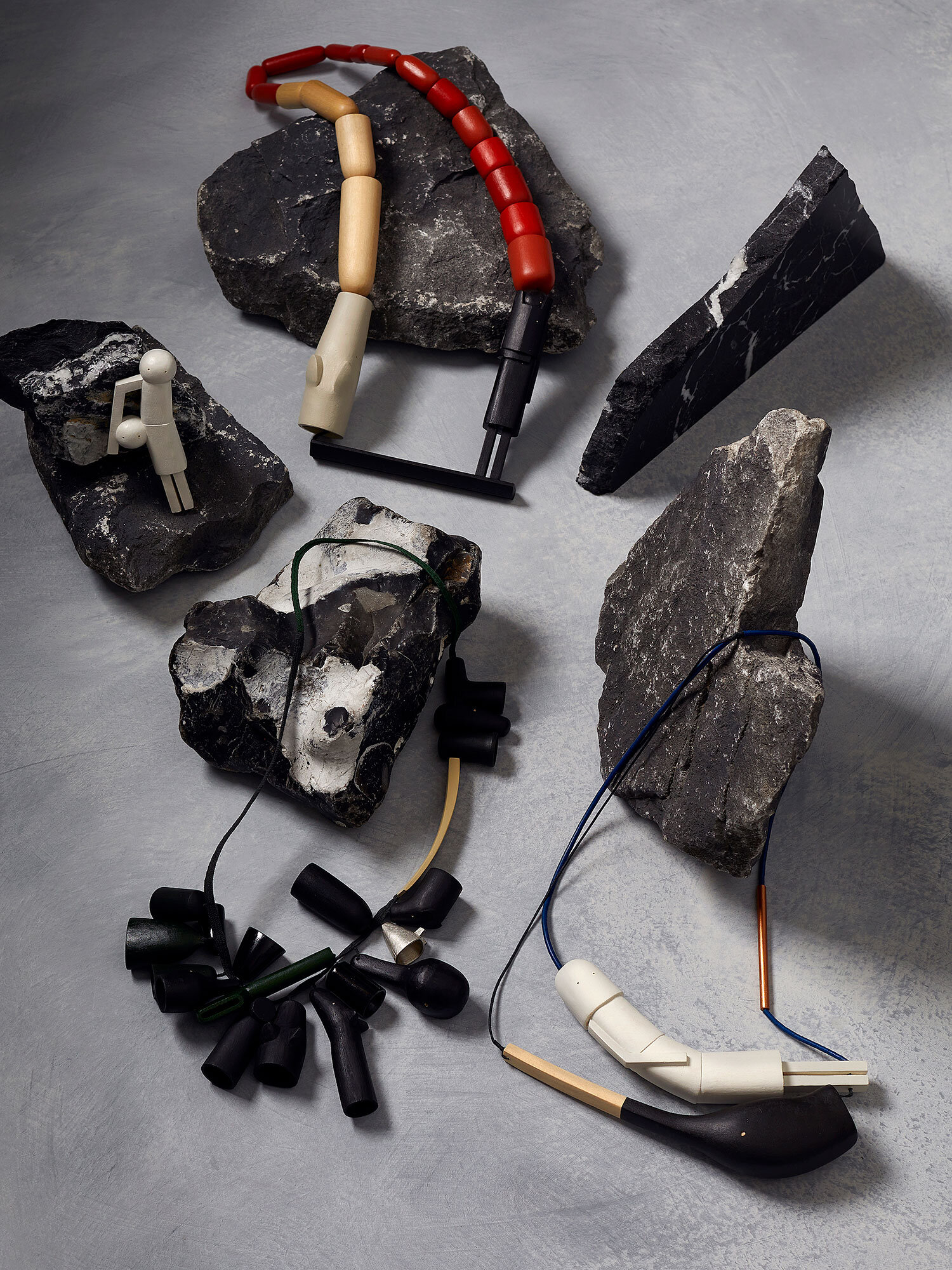Meet Vanja Bazdulj, founder of House on Mars

Vanja Bazdulj is the founder of the wonderfully offbeat London-based gallery House on Mars. An architect, educator, and maker, she spent a number of years at the helm of her own studio, and worked as a curator with a central London art school. Vanja established House on Mars in 2020. With a unique aesthetic vision, the gallery is home to a range of unconventional materials, processes, and ideas, that are realised in an array of surprising, three-dimensional forms.
An avid wearer of wearable art, Vanja is vehement in her support for the work of independent, contemporary artists and designers. Here, she describes the origins of House on Mars, her thoughts on the wearable art scene, her hopes and fears for the art and craft sector, and what we can expect from House on Mars at Collect 2021.
House on Mars is a wonderfully curious name. Can you describe how it came about?
It came about during a late night debate with my husband on what to name the gallery. And honestly, we both said ‘House on Mars’ at the same time.
Besides being a sci-fi buff and a Bowie fan, the name is a combination of two important facts, ever present in my mind: firstly, an awareness that we are this fascinating live organism, living on a planet in the middle of a construct we call ‘the universe’; and secondly, we have an innate need to be different, special, and adorned with things. Hence, the gallery contains things that are special—they belong not only in a ‘House on Earth’, but also a ‘House on Mars’.
You curate works by both established and emerging artists and designers. What qualities do you look for in an artist/designer?
I follow an instinct. I look for things that intrigue me, that make me curious, or give me a nice, fuzzy feeling in my belly. The artists and designers I have met are some of the most interesting people. They have a certain quirk in common, a twist in the way they use a material, and play with form and function.
I am curious about the processes used by each artist/designer. Some tell stories in three-dimensional form; others test and play with materials, achieving unexpected results. I consider if the process was material-based or thought-based; how the individual used their hands, tools, and machines; how the materials were formed in order to give life to something. Ultimately, the objects that are made have the power to transform spaces, feelings, and the perception of time.
What sets House on Mars apart from other galleries?
House on Mars presents a combination of undiscovered, raw talent, alongside an already established cohort of artists and designers. As a result, we have a coherent and immensely talented group of individuals, who create an array of unconventional works. We offer both context and harmony between the works of each artist/designer, showing how they mingle and elevate one another. We proudly invite the idea of ‘play’ into our everyday lives.
How would you describe wearable art to people, and what is your perspective on the wearable art scene?
In my opinion, ‘wearable art’, translated literally, means ‘art that you wear on your body’. There are many phrases that are in use, but I do favour this one in particular—it’s pretty self-explanatory.
I see a need for wearing art, but don’t believe that it’s a widely accepted concept. It takes a very special individual to acquire a ‘wearable’ art piece, as opposed to, say, a painting, sculpture, or piece of ‘fine’ jewellery. I do think it takes courage to wear art. For myself, it’s a need.
The burden of use and functionality is an ongoing problem for craft and design. Wearing art appears to lower its value, whereas I find the opposite to be true. In terms of use and functionality, where else should we place more emphasis than on the art we wear on our bodies?
Now, more than ever, we are buying vast amounts of goods online. How can we encourage consumers to make conscious decisions about what they buy (such as well-made and long-lasting), and persuade them to support independent artists and designers?
I see the role of the art/design dealer as one that has shifted in emphasis, to the role of educator and presenter. In order to persuade people that art and design are important, we need to emphasise and explain why it is special. The market is saturated, which means the action of discovering things has become a job, and most people suffer from ‘choice paralyses’.
In the current climate of crises, with places closing down, the need to emphasise locality and the humanness of our cause, has become increasingly evident. In my view, House on Mars represents what is being lost through speed and globalisation: locality, human scale, slow production, a slower life pace, and time to play and live.
Is handmade, contemporary craft the new luxury?
I always view time as a luxury. Essentially, we are buying into a world where more time is available to imagine, create, and make the mesmerising pieces we offer. I think clients and collectors buy into the ideas and stories behind pieces, as well as the way in which they are made. It is a case of ‘slow’ equals ‘luxury’: these items are made slowly, with care. In doing so, we support and make possible that which is lost through mass production and unconsidered consumption.
We face many uncertainties as a consequence of the UK leaving the EU and the ongoing coronavirus pandemic. What are your hopes and fears for the art and craft sector in 2021?
I hope the shifting of priorities will help our cause. Buying less and choosing things made with quality, substance, and meaning—helping to preserve the very humanity that is in making and creating—will help our cause. That said, I do believe things will cost more and processes will become slower.
Still, I fear the world will be in shock for a while yet. It’s not about re-establishing what is considered normal, or reinventing the new normal, but rather about getting back to the comfort of more certainty. This will help people to relax once again, and begin to enjoy life.
What can we expect to see in the House on Mars showcase at this year’s (online) Collect art fair?
The House on Mars showcase for Collect 2021 is titled ‘Beyond Typology’. It is about reimagining and reinventing our environment and our body as more humane and curious places, where we can feel safe and relaxed.
We are presenting a harmonious collection of pieces, made in a large variety of materials, formats, and textures. The collection is based on the human need for comfort and self-expression.
The exhibitors taking part in our showcase include: award-winning jewellery artist Zoe Robertson, who will present pieces from her ‘RE:animate’ collection—in one, ’Sensory Playground’, Zoe has created tactile objects, made for grown-up humans to play and interact with; artist Anna Ray has created ‘Weave’, a large, soft, and flamboyantly colourful wall installation—her work is something I have always wanted to immerse myself in (I also asked Anna to create wearable pieces); artist Karin Herwegh has made a number of curious brooches and necklaces, each one showing a certain sensitivity and humanness; young designer Nicholas Marschner has made a wonderful series of hand-polished zinc mirrors—with a sense of absence and disquiet, the pieces draw you into an imaginary world; young textile designer Alicia Rowbotham has created a luxurious, long silk fibre installation; prolific designer and maker Lambert Kamps will show a selection of his ‘Fat Furniture’, and we have a secret large piece to unveil; designer Attua Aparicio will show her never-before-seen playful ceramic lighting; and architect, furniture, and object designer–maker Juliano Cordano, will show ‘Untold Layer’—this collection of statement wall panels plays with layers of the interior and urban landscapes.
These artists and designers represent a selection of those taking part in the House on Mars Collect showcase.
www.houseonmars.net | @houseonmarsgallery | #houseonmarsgallery
| Banner Image: Anna Ray






